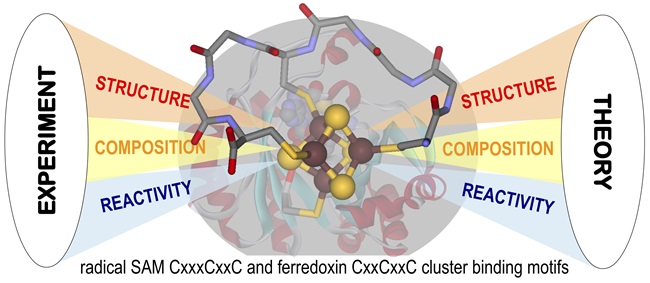Abstract:
The consideration that Life is the consequence of planetary evolution has a significant impact on our thinking of Emergence-of-Life scenarios on Earth and plausibly on other planets. The tantalizing idea of “rock powered life” [1] provides us with ample experimentally testable hypotheses, like pieces of a giant puzzle that we have the technologies and theories to solve. In order to contribute to the scientific grand challenge of Origins-of-Life research, my lab is focused on extant enzymatic processes that are enabled by the presence of sitedifferentiated [4Fe-4S] cluster complexes with dominantly S-ligand (Cys) coordination. We conduct synthetic, spectroscopic, and computational studies of [4Fe-4S]-maquettes in order to elucidate the structure/function relationships in metalloproteins (ferredoxins, high-potential iron-proteins) and metalloenzymes (hydrogenase, nitrogenase, radical S-adenosylmethionine activating enzyme). The main goal of these bio-inspired studies is to develop the fundamental understanding of the role and potential of site-differentiation in enabling chemical functions, such as small molecule activation. In parallel, we utilize compositional, structural, and reactivity insights obtained from our [4Fe-4S]-maquette studies to modify phylloaluminosilicates, members of kaolinite family, with transition metal substitutions. Our current focus is on exfoliated nanokaolinite particles with natural and engineered Fe-substitutions. These molecular-scale, 2D materials are projected to manifest the beneficial properties of metalloenzymes (soft-materials) and clays (hard-materials). In terms of chemical function, the marriage of these materials combines the advantageous redox chemistry of [Fe-S] motif and the acid/base reactivity of clays, as a 'Goldilocks' scenario for catalysis. Insights gained from our research guide experimental design and support structural and reactivity modeling efforts in order to establish connections among 'non-living' Fe-S minerals (mackinawite, pyrrhotite, pyrite), nano-particles (FeS(aq) or FeS(kao), i.e. particles embedded in kaolinite), and the [Fe-S] clusters of metalloenzymes/metalloproteins from extant and plausible ancient organisms.
Speaker: Dr. Robert Szilagyi, Montana State University
Date: Wednesday, 19 February, 10:00-11:00 at Mishima Hall
Host: Yasuhito Sekine

